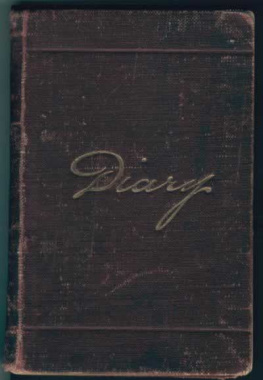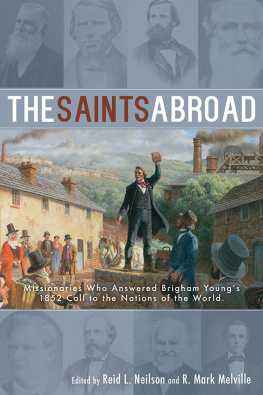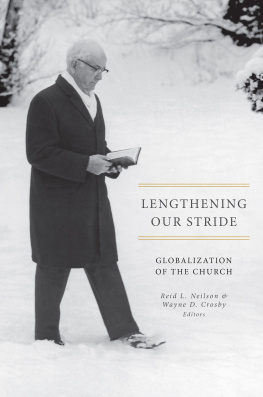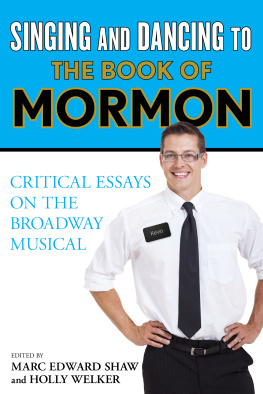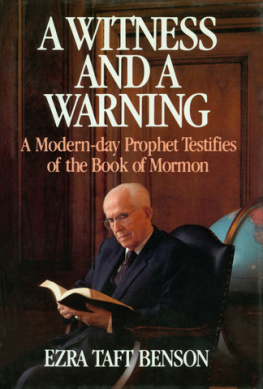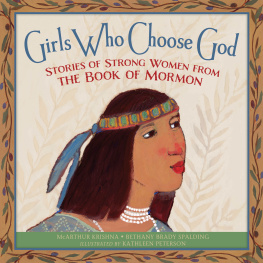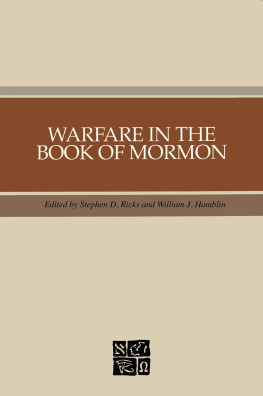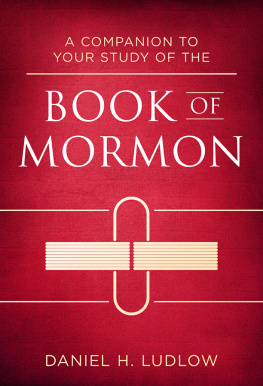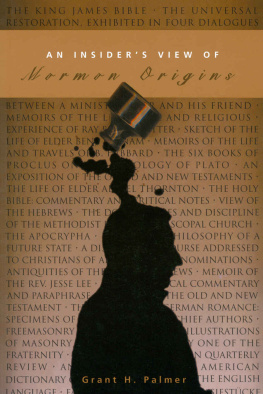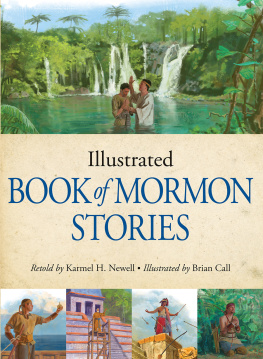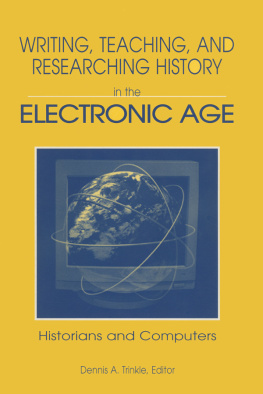2015 Brigham Young University.
Opinions expressed in this publication are the opinions of the authors and their views should not necessarily be attributed to The Church of Jesus Christ of Latter-day Saints, Brigham Young University, or BYU Studies.No part of this book may be reprinted or reproduced or utilized in any form or by any electronic, digital, mechanical or other means, now known or hereafter invented, including photocopying and recording or in an information storage or retrieval system, without permission in writing from the publisher. To contact BYU Studies, write to 1063 JFSB, Brigham Young University, Provo, Utah 84602, or visit http://byustudies.byu.edu.
Library of Congress Cataloging-in-Publication Data
Conversations with Mormon historians / edited by Alexander L. Baugh and Reid L. Neilson.
pages cm
Includes bibliographical references and index.
ISBN 978-0-8425-2890-0
1. Mormons--Interviews. 2. Church historians--Interviews. 3. Church of Jesus Christ of Latter-day Saints--History. 4. Mormon Church--History. I. Baugh, Alexander L., editor.
BX8693.C657 2015
289.30922--dc23
2014049496
To Gail Miller Wilson
Patron of the
Mormon Historical Enterprise

Editor's Preface

The sixteen interviews contained in this volume tell the stories of remarkable men and women who have made careers out of researching, writing, and teaching about the past. Friends and colleagues conducted these conversations over a decade or so, between November 2001 and September 2012, at the encouragement of Alex Baugh. All were subsequently published in the Mormon Historical Studies journal or Religious Educator periodical, with the hope of someday bringing them together as a single book of personal essays.
While the historians featured in the following dialogues are well known to students of Mormon history, a general introduction to them as a group is illuminating. All of them were born in the United States as members of the so-called silent generationAmericans birthed from 1925 to 1942. As children of the Great Depression years, they grew up between the United States greatest generation and the baby boomer generation. These men and women came of age and went to undergraduate and graduate schools during the forties, fifties, and sixties, enjoying the postWorld War II economic expansion of America. Our interviewees also inherited and helped lead what has been termed the New Mormon History.
Not surprisingly, these historians share a passion for the Latter-day Saint past. They love what they do and do what they love. It was the poet Robert Frost who penned the memorable lines in his classic poem Two Tramps in Mud Time:
My object in living is to unite
My avocation and my vocation
As my two eyes make one in sight
As we are all aware, however, merging ones hobby and occupation is no easy feat. Since the beginning of time, the vast majority of humanity has labored for their daily bread under less than ideal circumstances, having enjoyed precious little time for leisure pursuits or pastimes unconnected to providing for or nurturing their families. So Frost clearly presented a lofty ideal when he continued his verse as follows:
Only where love and need are one,
And the work is play for mortal stakes,
Is the deed ever really done
For heaven and the futures sakes.
As we have read and reread these conversations, we have come to appreciate that for many Mormon historians work is play and play is work. The men and women featured in this collection have successfully united what they do for a living and what they do for personal pleasure. There seemingly has been little disconnect between their personal and professional lives, and what a blessing that is.
These scholars, coming out of the New Mormon History, follow in the footsteps of other Mormon observers who found meaning in the past. In the preface to his final publication, Encyclopedic History of the Church, longtime LDS Assistant Church Historian Andrew Jenson reflected on his historical career choices and the happiness they had brought him. Happy is the man who finds himself doing that in which his heart delights and which harmonizes with his natural ability and desires; but unhappy is he who through force of circumstances, over which he has no control, is compelled through his sojourn in mortality, to do something that is in opposition to his nature and ability, he wrote just months before his passing. A man who enjoys his work finds life sweet and pleasant and every moment of it gives him joy and satisfaction, while the man who is forced to do things which he dislikes finds life a drudgery indeed. I have become convinced that historians, like poets, are born as such, and that this enables them to make their lifes labor successful. In Jensons mind, chroniclers of the past, like others laboring in the humanities and social sciences, were a cadre set apart and bequeathed with gifts and talents because they followed their hearts, not their pocketbooks or fate.
Moreover, Andrew Jenson viewed his professional work through a theological lens, hearkening back to time even before this mortal estate. He cast his labors onto a cosmic backdrop of premortal choices and aptitudes, which he drew out of a unique Mormon worldview. With this belief I can think of the beginning when God stood in the midst of the intelligences or His spiritual children and found among them many who were noble and good. So, in connection with the creating of an earth on which to place His offspring, God chose these noble spirits as leaders and rulers, he explained. According to Jensons gloss of Abraham 3:2223 from the Pearl of Great Price, Father Abraham and the prophet Jeremiah were foreordained to fulfill their biblical roles, along with many others who were selected for their mortal ministries based on their premortal spiritual progression. Likewise, Jenson was impressed with the thought that certain spirits were selected to come down and mingle with these leaders and rulers in mortality as poets and historians to record the work to be done by these great and noble ones. It is clear that by the end of his own life, this historian linked premortal aptitude and interests with mortal vocations and avocations. Ideally, and in his own case as a Mormon historian, Jenson enjoyed two eyes [that] make one in sight, as Robert Frost expressed. There was no difference between his employment and enjoyment.
Similarly, as we review and reflect on the personal lives and remarkable careers featured in this volume, we sense that many of these historians feel that they were perhaps prepared, or at least given a definite sense of mission and professional calling that stretches well back in time. It is our hope that you will enjoy reading about their childhoods, academic training, military service, courtships, family lives, professional contributions, books, articles, and personal reflections on their careers.

As the editors of this collection of conversations with Latter-day Saint chroniclers of the past, we had the good fortune to become fast friends as overlapping faculty members of the Department of Church History and Doctrine at Brigham Young University, Provo, Utah, between 2006 and 2009. During those years, we came to understand and appreciate each others historical interests and scholarly passions centered on the Latter-day Saint past. During that time, Alexs research and writing centered on Church history in the American Midwest, while Reids scholarship focused on evangelistic practices in Asia and the Pacific Isles. But both of us have beenand continue to beinterested in Mormon historiography, or the study of how the Latter-day Saint story has been told by its leading tellers. Moreover, we have both been the beneficiaries of many mentors in the field and the recipients of a remarkable heritage of Mormon historians who have taken us under their wings and helped us become contributors ourselves to the telling of LDS history. Many of the leading men and women who have helped shape the New Mormon History are highlighted in this assemblage of interviews.

